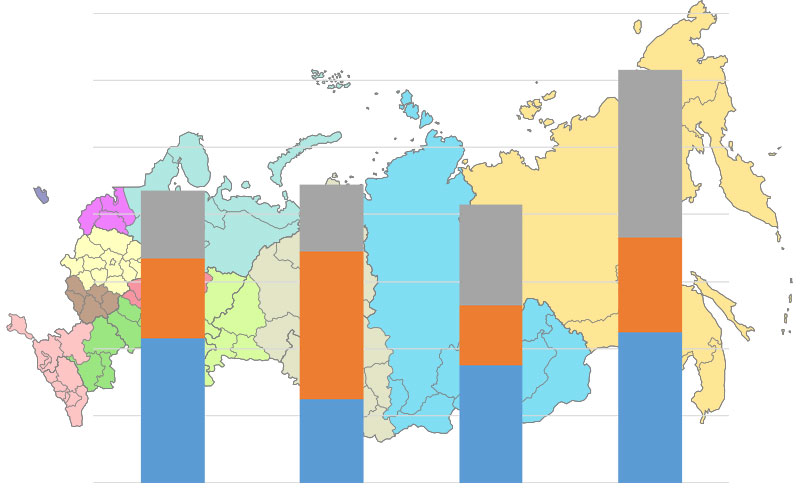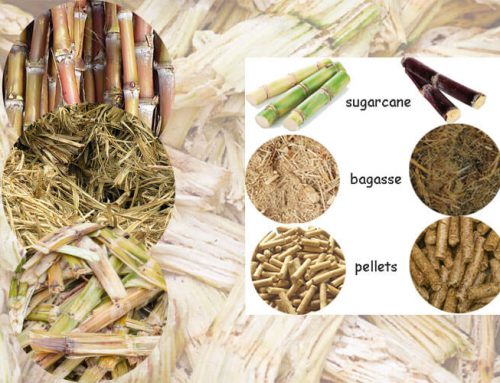Raw Materials of Biomass Pellets in Russia
I. Introduction to Russian Wood Pellet Market
According to a survey, Russia stood as fifth largest exporter of wood pellets after USA, Canada, Latvia and Germany with 728540 tonnes. Russian pellet companies are concentrated mostly in the North-West of Russia and in the central part of the region where there are forests or woodworking industry is developed. In general, the pellet business was started from the North-West of Russia where there are both woodworking industry and harbor. Then it spread to the central Russia and Ural, South Russia and Siberia. The Russian pellet market is concentrated on the wood pellets because of it large area of forests. The forests in Russia is about 542 million m3, which is about 40% of the Russian landmass.
At present, the main biomass pellet types are wood pellets in Russia, some husk and peat pellets work as well but the amount is small.
Types of wood biomass
1. Dry sawdust and shavings
2. Wet sawdust
3. Wet chips
4. Planks and slabs
5. Pulp wood
6. Low quality logs( fire wood)
There are other pellet producers using non-wood biomass such as
—sunflower husk
—straw and other types of agro waste
—peat
The wood materials are mainly from pulp and paper plant. Sawmills and woodworking plant. Consumption of wood fuel by the population in private house.
Wood Pellet Machines in Russia
Russians use mostly European pellet mills, especially SPC pellet machines from Sweden. At the same time, pellet mill equipment as Amandus Kahl, Andritz, CPM and Azeus Pellet Mill from China continuously have a bigger share in Russia market.
Wood Pellet Plant Capacity and Location in Russia
Most wood pellet facotries are concentrated in North-west Russia where there are abudant raw materials mainly forest resources, with the proportion of 60% pellets, the following area is central region, with the proportion of 30% and the rest 10% wood pellets are produced in other Russian regions. In fact, Russian wood pellet production was initiated by European investors who were interested in looking for new pellet producers. The first wood pellet plant used second pellet mill equipment which is derived from feed mill equipment. Most pellet plant are run on second hand pellet mills as well as second wood hammer mill and drying machines(if necessary). As the pellets quality produce by used machines is poor and the image of Russian pellets in Europe was damaged. After some years, the plant owners realized the problem and began to import new machines from European coutries and set new pellet plant. The biggest wood pellet plant in Russia is installed by “Vyborgskaya Cellolose”, JSC in poselok Sovetsky in Leningrad region. This Russia wood pellet plant is based on pulp and paper mill.
II. Distribution of Forests in Russia
Before investing, the distribution information of Russian biomass pellet raw material should be well noted. We know that the North-West is the most forest in the European part of Russia, from Figure1, the most attractive region of raw material resources is the Vologda region in the North-West. Allowable annual cut is harvested well compare to other regions. It is up to 72%. A lot of pellet mills are located in this region already. At the same time, forest is harvested very intensively here and the real cut is bigger than allowable cut. It means that it costs less to transport wood from this area than the final production price.
Alchangelsk region has a lot of raw materials for woodworking business as well as for pellet production. While the location of this region is not very attractive from logistical point of view. It cost too much to transport products to St.Petersburg harbor and other harbors. What’s more, there is no gas in this region so far, so that biomass fuel here is mostly for domestic market.
III. Domestic Market
Most pellet producers are oriented at exporting to Western Europe. There is no export duties on this product. On the domestic market, price increase on export pellet market and decrease of rubles leads to high profits for Russian pellet producers.
3.1 Price on domestic Market
Prices on domestic market differ and depend on the location of the plant, neighborhood of a big city, desire of big supermarkets to work with pellets. The internal consumption is growing in five big areas. The first one is the household use, they are mainly around big cities like Moscow, St.Petersburg, Nizhniy Novgorod. And the prices may range from 3500 to 5000 rubles. The pellets are usually packed in big bags or small 15-25kg bags. People can buy it in supermarket or in few pellet stores. The second group are offices, warehouses, production facilities, high dwelling communities, they often apply pellets as fuel for centralized heating. The pellets price including delivery for such customers is normally ranging between 3000-4000 rubles including delivery. Delivery in most cases is executed by trucks in big bag. The third big consumer is the municipal heating systems. In recent years, several municipal boiler houses have been switched to pellets . Pellets prices in these cases can be a bit lower(2500-3500rubbles per ton) for the consideration of further development of the internal market. The last two groups are bigger heating and energy facilities and autonomous CHP facilities.
3.2 Advantage in domestic market
Progressive pellet producers look on the domestic market more and more precisely. The price on the domestic market is about 30% higher than export price in general. But the demand is seasonal. On the respect of policy, the Russian government announced an interest in bio-fuel developing. The regional bio-energy programs started. Later on municipal sector will increase utilization of wood energy. Several demonstration projects are planned and under commissioning and they will act as a model for wide scale use of wood in district heating and CHP production.
IV. Export
4.1 Current situation
Although the internal consumption is growing, export is growing as well thanks for new pellet plants and modernization of existed plants which increase its capacities. To achieve the goal of reduction in greenhouse gas emissions by 2010, the EU Action Plan on energy was adopted by EU leaders in March 2007, set out concrete actions. And each member state is encouraged to establish national Biomass Action Plans. To promote the use biomass, pellets are one of the most interesting, cheap and environmentally friendly bio-fuels. The potential of the North- West Russia as one of the biggest pellet producers in Europe.
In the Figure 2, we can see that in 2013, the export of Russian wood pellets amounted to 1 million 200 thousand tons. 90% of pellets were exported to Europe and around 6%(75.5 thousand tons) to South Korea. In April, 2014 the wood pellet imports from Russia were about 470 thousand tons, which accounts for 36% of the total last year’s volume. However, it should be noted that there is a significant drop in demand for Russian wood pellets on the markets of Korea, Czech Republic, England , Norway and others. But the total amount is in an increasing trend.
4.2 Pellet transportation and logistics
The most pellets are delivered to Europe through St.Petersburg harbor(at least 60%-70% of produced pellets). About 15% of produced pellets are delivered through the Baltic harbors. Another 15% of produced pellets are delivered by trucks to Europe.
Logistics is different for different companies. Trucks, ships, railway are used inside and outside Russia. Due to great square and long transportation distance, the pellet transport and logistics account for large share of the total cost of pellets delivered to European customers from Russia. Efficient logistics is one of the crucial factors determining profitability of pellets production.
The No.1 pellet plant in Perm, it has the railway inside production capacity. Delivery from this plant to South Germany will cost 100 Euro per ton of pellets or 2000 Euro per truck. Delivery by railway to St.Petersburg port costs about 25-30 Euro per ton.
The No.2 pellet plat in Arkhangelsk area which is situated in 150 km from the nearest railway station. Delivery from this plant to South Germany will cost 119 Euro per ton of pellets or 2400 Euro per truck. Delivery by railway to St.Petersburg port costs about 18 Euro per ton plus to it delivery from plant to railway by truck which costs 12 Euro per ton. So it totally costs 30 Euro. Therefore, it’s very important to choose the site of plant if you want to build a pellet plants in Russia.
V. Conclusion
The capacity of pellet plants in Russia is huge. The pellet market both in Europe and Russia is developing very rapidly. Besides policy support of biomass energy, the price of fossil fuel and electricity will increase and get closer to international, so that there will be a great demand of biomass energy, especially the biomass pellet which is east to store and transport. So the biomass pellet market seem to be more and more attractive in the neat future.











Leave A Comment